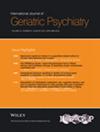Relationship Between Clusters of Multimorbidity and Dementia Risk: A Systematic Review
Abstract
Objectives
Emerging evidence demonstrates that multimorbidity, defined as the co-occurrence of at least two chronic conditions, may elevate the risk of dementia especially when certain conditions co-occur. Therefore, we investigated the available evidence on the relationship between clusters of multimorbidity and dementia risk in adults.
Methods
Embase, PsycINFO, and Ovid MEDLINE were searched until the ninth of February 2025. Included studies reported dementia risk or incidence in adult populations in relation to different clusters of multimorbidity. A narrative synthesis was structured according to the identified clusters across studies, their associations with dementia risk, and any moderation or stratification analyses for APOE ε4 allele carriership and C-reactive protein (CRP), among others. The Quality In Prognosis Studies (QUIPS) tool was used for quality assessment.
Results
Of the 870 abstracts screened, 7 were included in the final synthesis. Significant relationships between clusters of multimorbidity and an elevated risk of dementia were identified in all studies. The most consistent findings related to cardiometabolic and mental health/neuropsychiatric clusters evidencing the highest dementia risk. Other multimorbidity clusters were less well studied and results regarding dementia risk varied across studies. Moderation and stratification analyses for APOE ε4 and CRP, where available, yielded inconsistent findings.
Conclusion
This systematic review highlights the importance of understanding multimorbidity clusters for early identification of dementia risk and targeted treatment approaches. Further research is required to explore relationships between multimorbidity clusters and dementia risk across different ethnic groups as well as the potential moderating role of lifestyle factors.


 求助内容:
求助内容: 应助结果提醒方式:
应助结果提醒方式:


